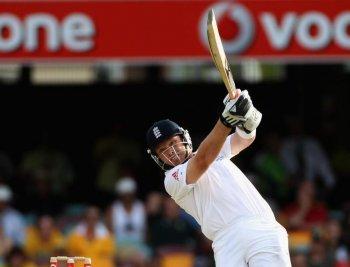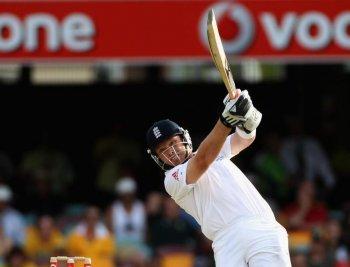First at the batting crease and trying to stamp his influence on the match, Strauss was caught out for a duck by Michael Hussey (bowled by Ben Hilfenhauson) on the third ball of the day.
Jonathan Trott was only on 29 runs when he was bowled by Shane Watson, in his first over, not long after.
England had a lucky escape when Alistair Cook was dropped by Xavier Doherty. Cook and Kevin Pietersen then found their swing and forced the Australians onto the back foot. With a score of 2/82, England looked in control at the end of the first session.
After lunch …
Peter Siddle, proved his case for selection in the Australian team, taking out both Pietersen and Cook in the 37th and 38th overs respectively. He also bowled a hat-trick in the 65th over. He converted the scoreboard from 5 for 197 runs to 7 for 197, while taking out the middle-order batsmen in quick succession and propelling himself into the history books. Indeed, Siddle has become only the eighth Australian to achieve a Test hat-trick.
Until that point, England were looking comfortable, but eventually they were all-out for a total of 260 runs. This gave Australia a huge advantage due to the low target England set – mostly through Australia’s good use with the ball and Siddle’s six wickets for 54 runs.
England’s Bell gutsy
England’s batsmen Ian Bell looked to take aggressive swings at the ball, especially as wickets started to fall around him and he desperately looked for runs. Unfortunately, it proved his undoing and he went out for a gutsy 76 runs.
Not lasting the day with the bat—with a total of 260 runs from 76.5 overs at a rate of 3.38 runs an over—England did not perform to expectations placed on them by their fan-base and commentators.
Australia at bat
Australia started their batting innings late on Day 1 and scored 25 runs from their 7 overs without dropping a wicket, with Watson finishing on 9 runs and Simon Katich on 15, with an extra.
Day 2
Australia took the advantage gained from the first day into the second day and played aggressively, with both Watson and Katich scoring runs and attacking the bowlers—especially the English spinner Graeme Swann, who struggled to take wickets through the day.






